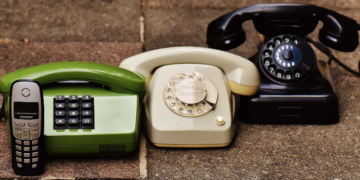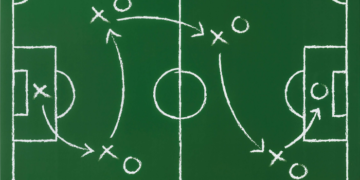Conduent, a technology-led business process services company, conducted a survey regarding the level of satisfaction among customers with the service they receive online. The publication gives us a lot of practical knowledge, but in this article we will focus our attention on the ways of increasing the number of loyal customers thanks to efficient customer service online. We will answer the question of why today’s consumers are no longer satisfied with e-mail and telephone as the basic form of contact with an online store or service, how customers prefer to contact your store and why. We will also discuss how an efficient online customer service can help you gain advantage over your competition and attract 76% more of e-clients, who always prefer to shop where they are better attended.
Omnichannel – the customer is always right
For several years now, we have been able to observe the blooming of omnichannel communication. But how did it appear in the first place? Why have customers suddenly dispersed and started using different communication channels? The answer is simple – the evolution of smartphones is the driving force behind this change. Customer service in e-commerce must keep pace with the technological developments. Ever since sending a text message, a direct message with social media, sending an email or contacting via chat has become just as quick and convenient, customers began to choose their favorite channels of communication, in place of the only ones available. Some prefer to use a chat, others prefer to call, some more use the FAQ section on the website. If we want to provide quality service to a customer, we must be present and available in all of these channels.
Three types of clients – how to communicate with them, and how much time you have to give them an answer before they turn to your competition.
In the mentioned study, three main types of online customers were distinguished and the communication channels they select most often were selected. In terms of customer service, online brands have to adapt to the following:
- Do-It-Yourself-Heroes (24% of the respondents) – these are the clients who move around well in the online environment. These customers look for self-help information (a self-help/FAQ section on the site, an application on a mobile device or a virtual assistant) to avoid direct interpersonal interaction.
- Digital Conversationalists (27% of the respondents) – these customers enjoy an online contact with another person (via an email, an internet chat, social media). They have a tendency to solve problems themselves, with a bit of help from an online consultant.
- Conversationalists (49% of the respondents) – look for human contact through face-to-face communication or a telephone conversation.
What do all of the above-mentioned clients have in common? The time they give the shop to solve their doubts or answer their question. The maximum time a given customer can spend on a given brand is … 10 minutes. Maximum! You have that much time to keep your customer and significantly increase the level of their satisfaction with your service. Despite the fact that this fact is commonly known, as many as 76% of surveyed clients believe that online brands do not provide them with a satisfactory level of service. An efficient customer care is therefore an area that can allow us to build a strong advantage over our competition.
Chat, email, phone vs a customer’s frame of mind – which channel your client chooses and what influences their decision
As the number of modern communication channels is almost unlimited, the word “multichannel” may sound scary. Nevertheless, there is nothing to stress about. The study by Conduent revealed that an average consumer uses mainly five communication channels. The following things may influence which of them is chosen to contact your brand:
- the type of problem
- the time they can devote to get answers
- the day of the week (‘it’s Sunday, probably no one will answer my email…’)
- the availability of a device (Is the person working at their computer or moving around with a phone in their hand?)
- and even their mood (‘Do I feel like talking to a man, or do I prefer to use chat today …?’).
Top 5 communication channels chosen by customers
It is the client who decides how to contact you – not you. Even the most beautifully designed website or a convenient, free plugin and an easy phone contact will not help if the customer can not stand the phone calls and simply wants to chat. Therefore, your role as a service provider is to offer your customer as many communication channels as possible, from which he can choose the favorite and the best one for them at a given moment. As much as possible, but not too much – customers clearly indicate their 5 favorite communication channels to use – varying whether it’s for communicating with their family and friends or brands.
How to win over a dissatisfied customer?
As we mentioned at the beginning, as many as 76% of surveyed customers state that they are not satisfied with the customer service they encounter everyday in stores and online services. Their negative evaluation results not from the level of service, but from the lack of a sufficient number of contact channels, from too long response waiting period, or from the feeling that the product/service provider does not know them even though the client gave them a lot of information. Therefore, when implementing a multichannel communication, it is necessary to ensure an effective contact management at the beginning. Customers will ask questions by email, by phone, through Social Media, and the task of the manager of the e-service is to have the entire communication history in one place. That will allow to identify the customer quicker and swiftly respond to their needs, and as a result, increase their satisfaction with service and gain their loyalty! If the customer is satisfied with their shopping experience, if they received a reply to their inquiry via the same channel they chose to send it – they will probably come back again and recommend your brand to his friends. Fortunately, there is efficient and easy to use and implement software available on the market that will allow you to integrate several communication channels in one place. You will be able to get to know your clients better, please them and make them recommend you to others. 76% of online customers are a huge percentage. There is something to fight for, and it can be done with a few clicks, without the help of a computer programmer. Omnichannel remains an area that can help you stand out from the competition – in a few simple steps.





